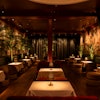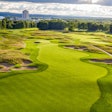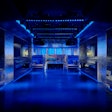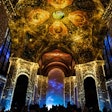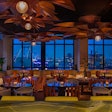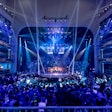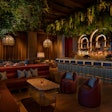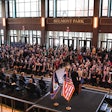When we took a look at the attendance at Bon Jovi’s Great Lawn performance last week, the crowd of 48,000 was dwarfed by the park’s great concerts of yore. Regulations now limit attendance at any one event to 75,000, but photos of the packed crowd prompted The New York Times to look at the legitimacy of claims that concerts like Garth Brooks' 1997 show attracted 750,000 people to the North Meadow.
It turns out that 750,000 was probably a bit of an overestimate. Doug Blonsky, president of the Central Park Conservancy and a former city parks administrator, had this to say to The Times regarding past attendance figures: “You would get in a room with the producer, with a police official, and a person from parks, and someone would say, ‘What does it look like to you?’… The producer would say, ‘I need it to be higher than the last one.’ That’s the kind of science that went into it."Breaking down the park’s different event spaces by usable acres and maximum physical capacity, it turns out there’s no way crowds of 300,000 or 750,000 could fit within earshot of a performer, much less gather on any one particular lawn. This delayed realization takes a bit of the romance out of those historic events and probably stings Garth Brooks' ego, but it will likely quell the complaints of future groups denied permits to assemble due to unrealistically large crowds. Just this past January, the city of New York settled a lawsuit with two antiwar groups denied permits to rally in Central Park during the 2004 Republican National Convention.
It turns out that 750,000 was probably a bit of an overestimate. Doug Blonsky, president of the Central Park Conservancy and a former city parks administrator, had this to say to The Times regarding past attendance figures: “You would get in a room with the producer, with a police official, and a person from parks, and someone would say, ‘What does it look like to you?’… The producer would say, ‘I need it to be higher than the last one.’ That’s the kind of science that went into it."Breaking down the park’s different event spaces by usable acres and maximum physical capacity, it turns out there’s no way crowds of 300,000 or 750,000 could fit within earshot of a performer, much less gather on any one particular lawn. This delayed realization takes a bit of the romance out of those historic events and probably stings Garth Brooks' ego, but it will likely quell the complaints of future groups denied permits to assemble due to unrealistically large crowds. Just this past January, the city of New York settled a lawsuit with two antiwar groups denied permits to rally in Central Park during the 2004 Republican National Convention.


